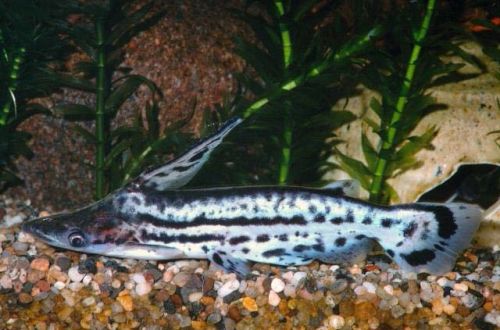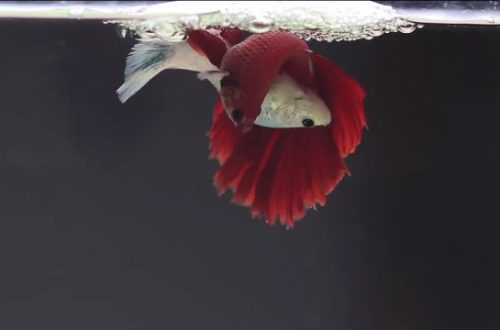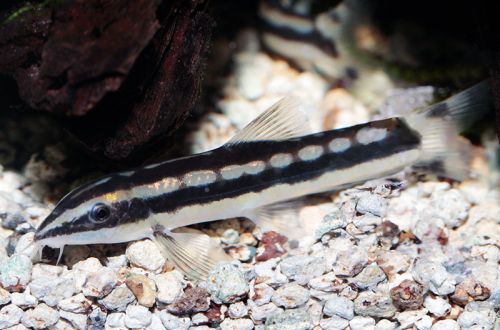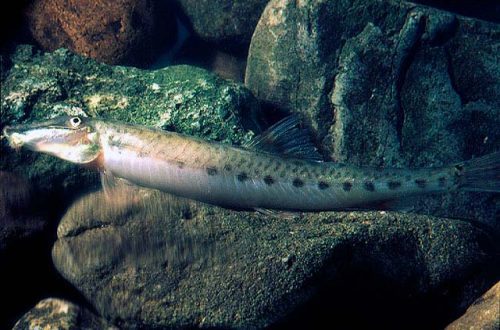
Ageneiosus
Ageneiosus, scientific name Ageneiosus magoi, belongs to the family Auchenipteridae (Occipital catfishes). The catfish is native to South America. Inhabits the Orinoco River basin in Venezuela.

tsananguro
Adult individuals reach a length of up to 18 cm. The fish has an elongated and somewhat laterally flattened body. Males have a peculiar hump, which is crowned with a curved dorsal fin with a sharp spike – this is a modified first ray. The coloring consists of a black and white pattern. The pattern itself can vary greatly between populations from different regions, but in general there are several dark (sometimes broken) lines stretching from head to tail.
In wild, wild-caught fish, yellow spots are present on the body and fins, which eventually disappear when kept in aquariums.
Maitiro uye Kuenderana
Active moving fish. Unlike most catfish, during the daytime it does not hide in shelters, but swims around the aquarium in search of food. Not aggressive, but dangerous to small fish that can fit in the mouth.
Compatible with relatives, other species of comparable size from among the Pimelodus, Plecostomus, Nape-fin catfish and other species that live in the water column.
Ruzivo rupfupi:
- Huwandu hweiyo aquarium - kubva pa120 malita.
- Tembiricha - 23-30 ° C
- Kukosha pH - 6.4-7.0
- Kuoma kwemvura - 10-15 dGH
- Substrate mhando - chero
- Kuvhenekera - kuderera
- Mvura ine brackish - kwete
- Kufamba kwemvura - pakati nepakati
- Hukuru hwehove hunosvika 18 cm.
- Chikafu - chero chikafu chinonyura
- Temperament - rugare
- Zvemukati - ndega kana muboka
Kugadzirisa uye kutarisira, kurongeka kweiyo aquarium
Aquarium sizes for one adult catfish start at 120 liters. Ageneiosus likes to swim against the current, so the design must provide free areas and ensure moderate water movement. Internal flow, for example, can create a productive filtration system. Otherwise, decoration elements are selected at the discretion of the aquarist or based on the needs of other fish.
Successful long-term keeping is possible in an environment with soft, slightly acidic, clean water rich in oxygen. Particular attention should be paid to water quality. It is important to keep the filtration system running smoothly and to prevent the accumulation of organic waste.
chikafu
Omnivorous species. Satiety instincts are not developed, so there is a high risk of overfeeding. There is almost everything that can fit in his mouth, including more small neighbors in the aquarium. The basis of the diet can be popular sinking food, pieces of shrimp, mussels, earthworms and other invertebrates.





